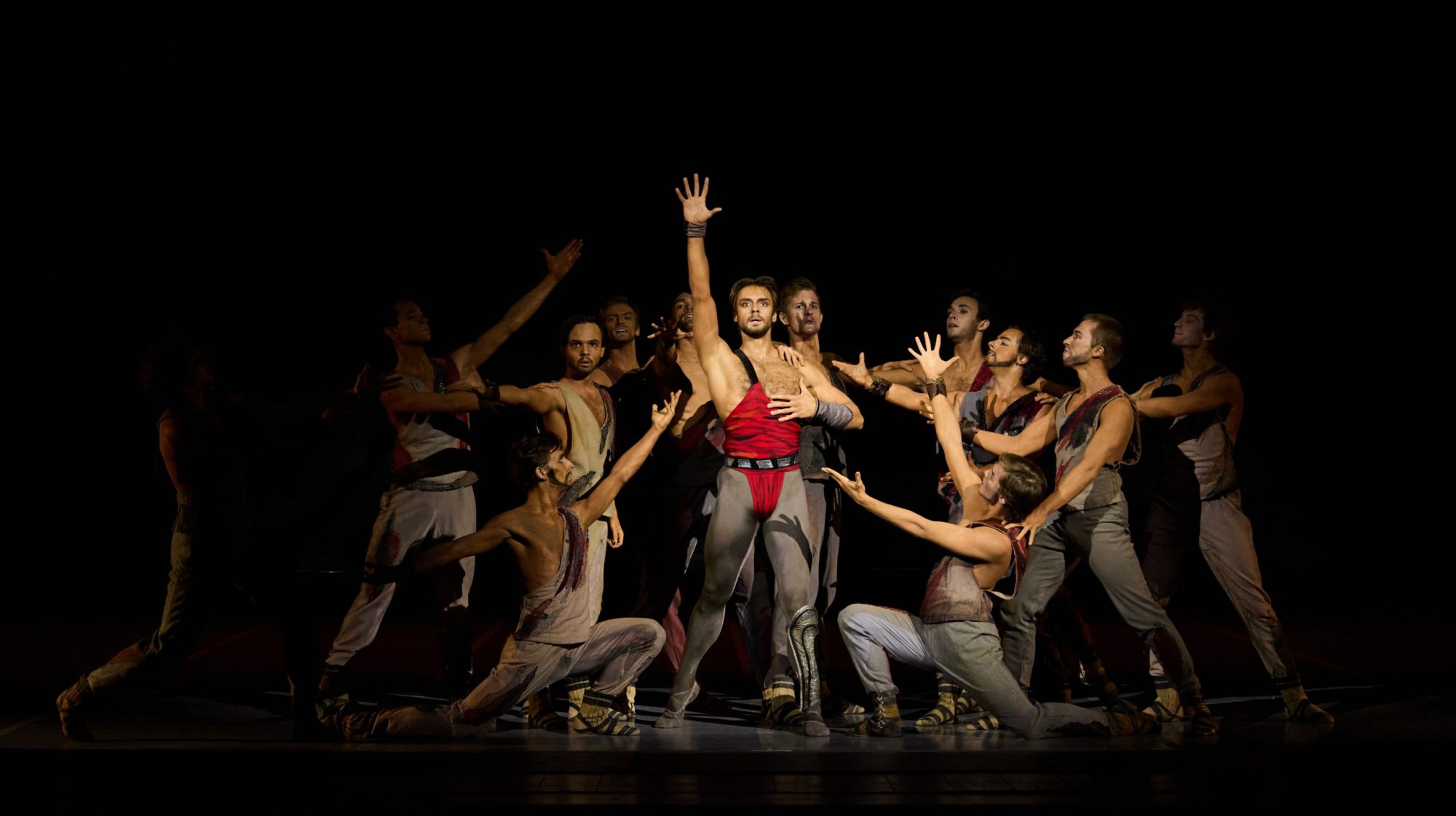The Royal Ballet
Royal Opera House
London, Great Britain
November 19, 2017
by Ilona Landgraf
Copyright © 2017 by Ilona Landgraf
| Reading the recent reviews on the Royal Ballet’s triple bill of works by Twyla Tharp, Arthur Pita and Hofesh Shechter makes one smile and wonder at the same time. Smile, because of the totally different opinions of the writers. While Graham Watts, for example, judged Shechter’s “Untouchable” positively on backtrack.com and Mark Monahan declared it the program’s “undisputable highlight” in The Telegraph, Alastair Macaulay, The New York Times, found it “the most preposterously dance-thin ballet I have ever seen.” Jann Parry deemed it a “dated commission that never merited its place in the repertoire” on DanceTabs. |
I was surprised, however, about the course Luke Jennings pursued in his online review for The Guardian. At the end of October, Jennings had already labeled Kenneth MacMillan’s “The Judas Three” on The Guardian’s website as presenting misogyny, concluding “the Judas Tree makes voyeurs of us all.” Yet, only one paragraph before in the same article he went on about intimate details from MacMillan’s biography, making one wonder who actually is the voyeur. Clement Crisp, by comparison, wrote in his review on the same program in the Financial Times: ”Kenneth MacMillan understood, given the respect and dignity his work demands in this celebratory season. […] A taxing psychological study by a theatrical master, urgent with meaning and allusion, and here superbly shown by the Royal Ballet.”
| Jennings’ review on the Royal Ballet’s latest triple bill was preceded by one written by his Guardian-colleague, Judith Mackrell. While Mackrell had commented on all three pieces of the program, Jennings omitted Shechter’s work entirely and used Tharp’s “The Illustrated Farewell” as a springboard to criticize women’s roles in ballet in general and denouncing Pita’s “The Wind” for having a “violent rape” as “pivotal event” in particular. (Interestingly, Jenny Gilbert avoided the word “rape” in her review on theartsdesk.com, and instead enthused over “a semi-naked Edward Watson in white body paint […] working those famous back muscles” that made the ticket worthwhile. Watson portrayed an indigenous Indian warrior, not the rapist.) |
Jennings’ critique extended on the Royal Ballet’s program of the last few seasons, because of its “record numbers of female characters [being] brutalized and killed.” He found “the Royal’s commissioning process […] needs examining” and declared right away in the first lines of his review that Tharp’s and Pita’s pieces “raise serious questions about the company and the vision of its directors”.
Jennings’ opinion was taken up in subsequent articles in The Telegraph and the Evening Standard. On the website of the Evening Standard, Robert Dex talked in the plural pronoun about “critics bemoaning yet more sexual violence”, but the only one doing so was Jennings. Dex also stated that “audience members reacted angrily to the choreography” and quoted two comments from the Royal Ballet’s website made by members of the audience after the performance. Of those I could only find one. The respective site currently has twenty comments, three of which are indeed critical about the rape scene in “The Wind”. The Royal Opera House has more than 2,200 seats. Are three critical voices representative?
Both The Telegraph and the Evening Standard moreover referred to an article by Siobhan Burke in the New York Times from May 2017 about Alexei Ratmansky’s “Odessa”, in which Burke expressed her disgust about what she considered the depiction of a woman being gang-raped. The article had caused a divisive and ongoing debate about violence against women onstage and the portrayal of gender roles. Shall the Royal ballet develop guidelines about the do’s and dont’s for new choreographies?
| Has the issue of aggression and violence against women reached a level of awareness that every further encounter causes a hyper-sensitive reaction? If so wouldn’t that need to be addressed from a socio-political level right up to individual relationships? Merely claiming I do not want to see that anymore, so off the repertoire with the piece seems childish. Besides, the Royal Ballet’s shows come along with hints on their content and “The Wind” had a warning for audiences of scenes of an “adult nature” and “sexual violence”. If someone doesn’t consider that the right evening entertainment why not spend the money on a ticket for “Alice in Wonderland”, “ The Nutcracker” or a musical instead? |
And what to make out of Jennings’ complaints about the Royal Ballet’s repertoire? Four of the six ballets he named by title are by MacMillan. Shall the Royal Ballet put the pieces by one of their most influential choreographers on the back burner just to please Jennings’ taste?
Recently, in an online course about opera, Mark Dakin, Technical Director of the Royal Opera House, said, “great art is about tearing you apart, and opening you up, and helping you to look at yourself and the society that you live in.” It’s not about feeling comfortable all the time.



